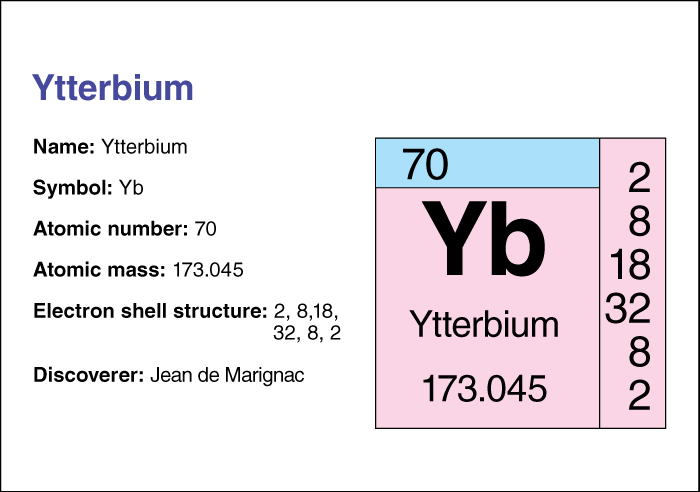Ytterbium, << ih TUR bee uhm, >> is a soft silvery metal. Small amounts of ytterbium are used in metallurgical and chemical experiments. In 1878, the Swiss chemist Jean de Marignac gave the name ytterbium to a substance that he found in a mineral called yttria. In 1907, the French chemist Georges Urbain separated de Marignac’s substance into two chemical elements, lutetium and ytterbium. Several minerals, such as monazite, gadolinite, and xenotime, contain ytterbium.

Ytterbium is a lanthanide element. Its chemical symbol is Yb. Its atomic number (number of protons in its nucleus) is 70. Its relative atomic mass is 173.04. An element’s relative atomic mass equals its mass (amount of matter) divided by 1/12 of the mass of carbon 12, the most abundant form of carbon. Ytterbium melts at 819 °C, boils at 1196 °C, and has a density of 6.973 grams per cubic centimeter at 25 °C (see Density ). For information on the position of ytterbium on the periodic table, see the article Periodic table .
